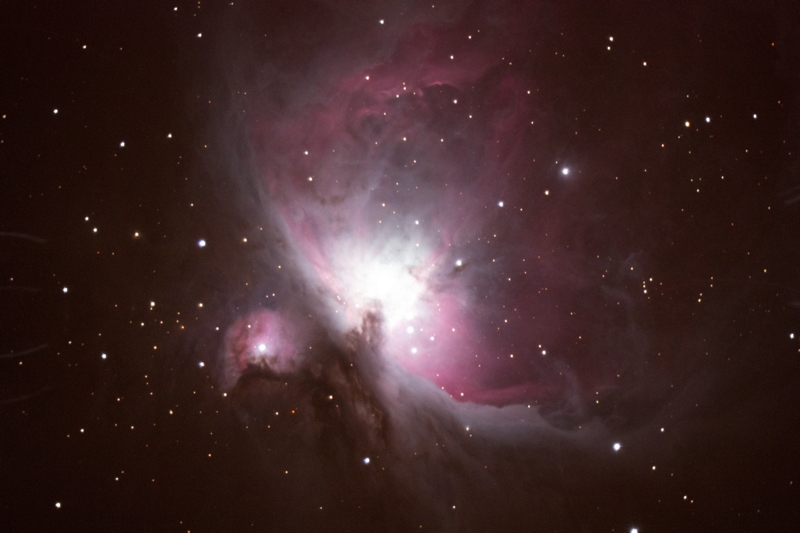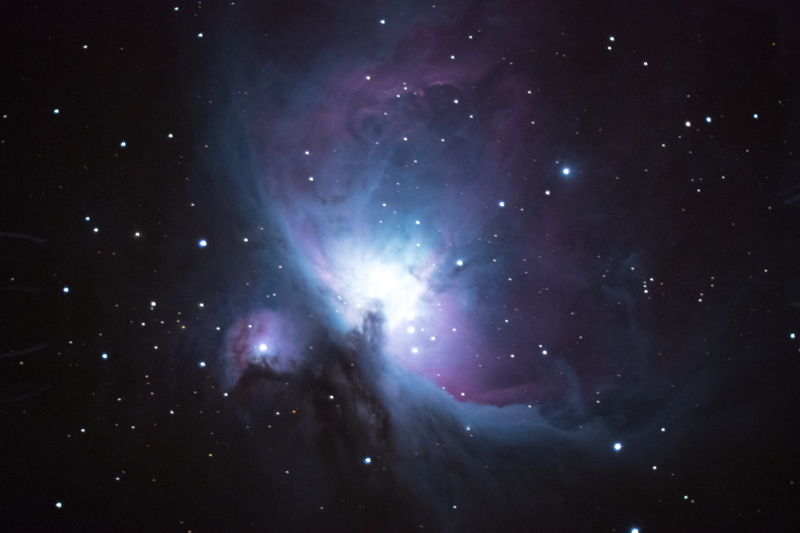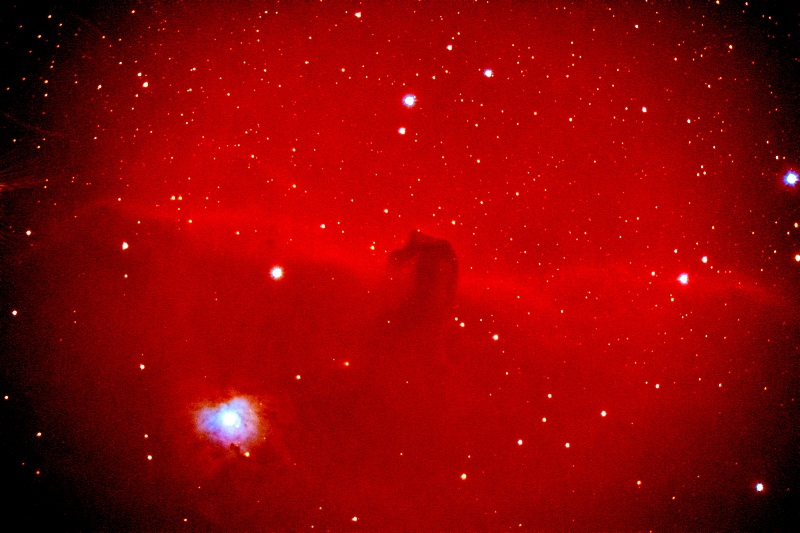Critter Visitor;
Tests: D7200 DSLR White Balance, LX600 StarLock Long Exposures
Posted: 28 February 2016
Just as I was heading out to the observatory, this bobcat came for a visit:


Click or tap on image for larger version
|
Open: Saturday, 27 February 2016, 1814 MST Temperature: 85°F |
Session: 929 Conditions: Mostly clear, clouds low west-to-north |
Two specific tests were planned for this session. After reading the article "How to Choose the Correct White Balance" I decided to do some test exposures to compare results with my D7200 DSLR for astrophotography through the telescope with Auto White Balance vs a temperature of 4000K. The second set of tests would be long exposures of some deep sky objects (DSOs) to see how well the StarLock autoguides now that I have completed some optimizations, which were done on the previous session.
1818 MST: sunset. 1843 MST: powered on the 12" LX600. Switched to a Baader 8-24mm Zoom Eyepiece for an attempt to see Sirius B (the "Pup Star") while the sky was still bright. GOTO Rigel; AutoStar/StarLock placed Rigel way outside of the finderscope field-of-view (FOV) for some reason. Had done a Park after the previous session so this was rather odd. Centered Rigel in the eyepiece and SYNCed the AutoStar (which also syncs the StarLock). Viewed Rigel at 305X (8mm) to check the separation of its component star (similar to the Sirius A-B separation). 1856 MST: GOTO Sirius; it was placed in the 8mm eyepiece FOV. Seeing was not very good and I was not successful at viewing the Pup Star.
1904 MST: GOTO M42; the six stars (two very faint ones) of the Trapezium were nicely visible at all zoom eyepiece focal lengths.
1907 MST: began preparations for D7200 DSLR imaging at prime focus + visual back + Optec focal reducer (review forthcoming). Back to Rigel, which would be the focus test star using the Astrozap Focusing Mask.
1913 MST: the Zodiacal Light was becoming visible well before the end of Astronomical Twilight (at 1941 MST). However, the clouds in the western sky were getting closer. 1933 MST: began imaging.
I used M42 (Orion Nebula) as my first test of D7200 DSLR White Balance. Here are two 30 seconds, ISO 3200, exposures:
White Balance: Auto

White Balance: 4000K

Personally, I like the Auto setting better. I will be doing more White Balance tests on future sessions.
Then did a GOTO the Horsehead Nebula. Did a 30 seconds, ISO 6400, framing test exposure. The StarLock placed it right in the center! Cool! As a test of the StarLock autoguiding did a 5 minutes, ISO 6400, exposure. While not exactly perfect, I would say the StarLock did a pretty good job:

Next, did a GOTO the Eskimo Nebula (NGC2392) and did a 2 minutes, ISO 6400, exposure. The planetary nebula was overexposed but this highly cropped image shows how well the autoguiding performed:

I plan to re-image the Eskimo Nebula on the next session.
The last StarLock autoguiding test for this session was using M82 (galaxy). The StarLock placed the galaxy near the edge of the camera FOV. I did not center the galaxy for the first two test exposures of 2 minutes and 5 minutes. After viewing the images on the DSLR screen I decided autoguiding looked good enough to try a 10 minutes, ISO 6400, exposure. I centered the galaxy using a star that was visible on the Live Screen screen. This is the 10 minutes StarLock autoguided image:

Not exactly perfect but not too bad either. Once I have the pier installed I will be refining the StarLock setups (as well as the polar alignment). From my preliminary tests so far I expect that StarLock autoguiding will do exactly what it was designed to do by Meade and justify my excitement in the LX600.
Imaging tests were completed at 2036 MST. I removed the camera and at 2046 MST viewed Jupiter, low in the eastern sky, using the zoom eyepiece. Three moons were visible. Unfortunately, clouds were now in the western half of the sky. Began closing up.
|
Close: Saturday, 27 February 2016, 2102 MST Temperature: 60°F |
Session Length: 2h 48m Conditions: Partly cloudy |
Weather permitting, since I have to work outside, I plan to start construction of the POD Zenith Table (PZT) Sunday morning, 28 February.
Comments are welcome using Email. If you are on Twitter you can use the button below to tweet this report to your followers. Thanks.
Cassiopeia Observatory Home Page
Copyright ©2016 Michael L. Weasner / mweasner@me.com
URL = http://www.weasner.com/co/Reports/2016/02/28/index.html

